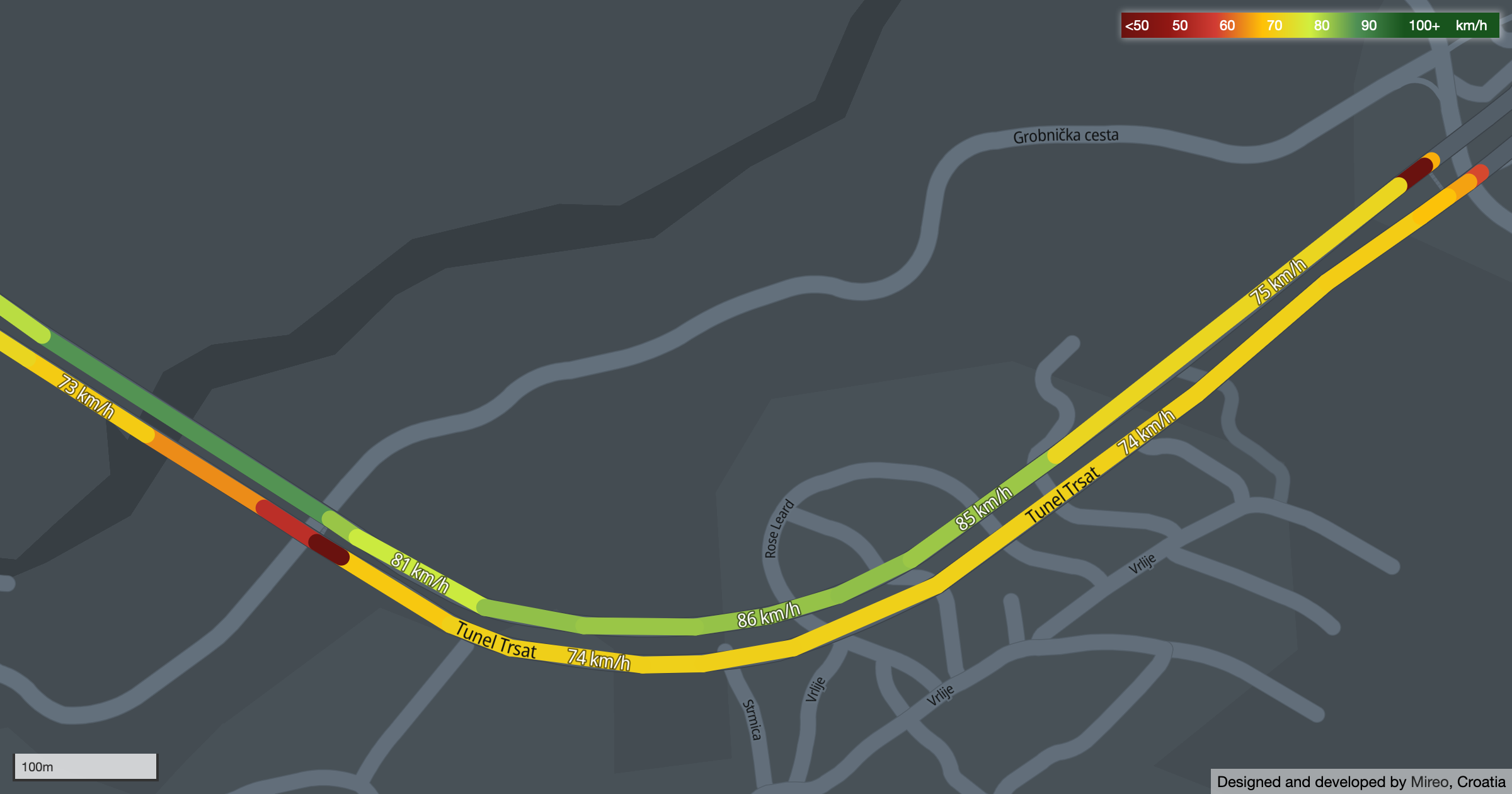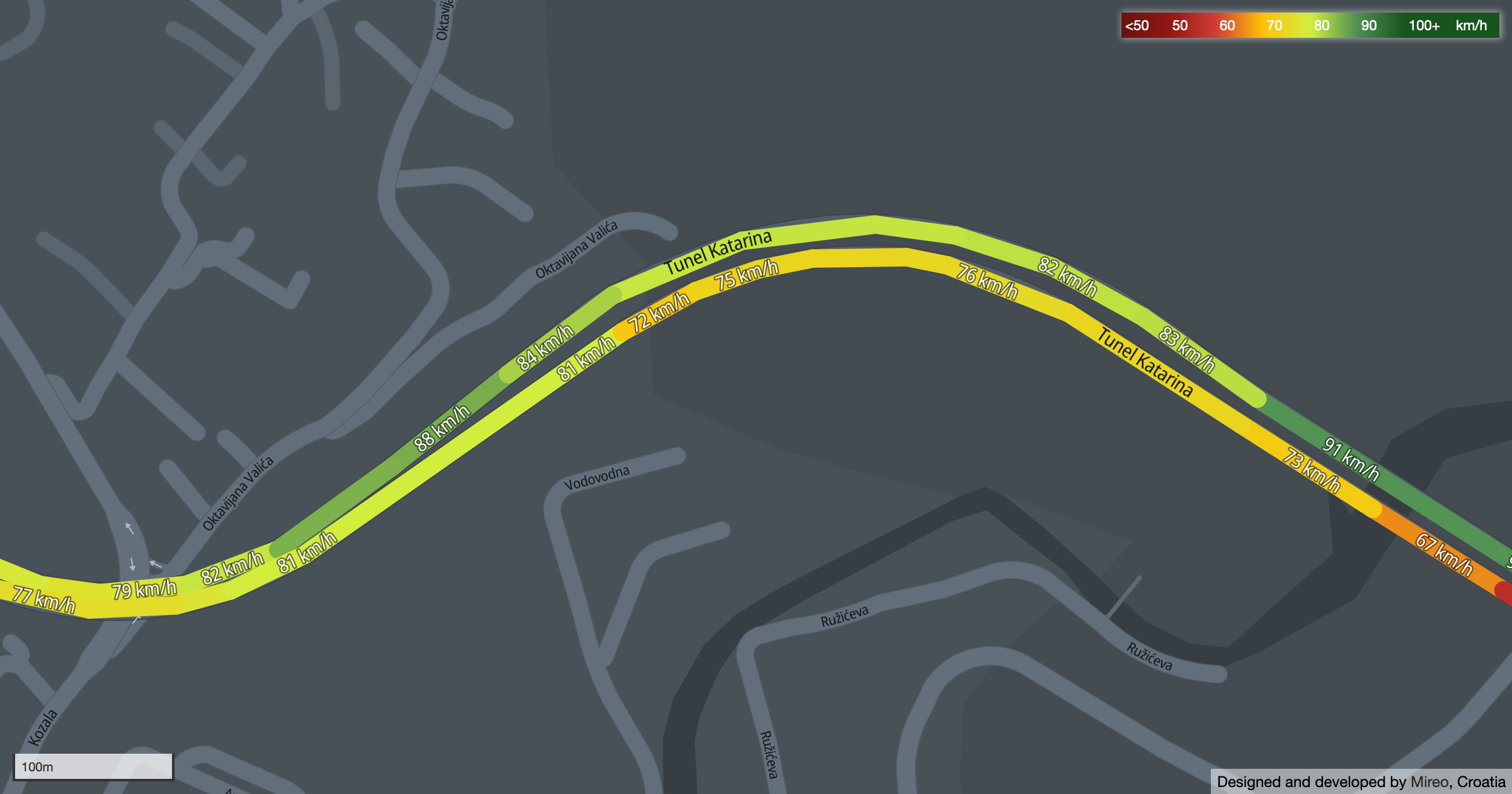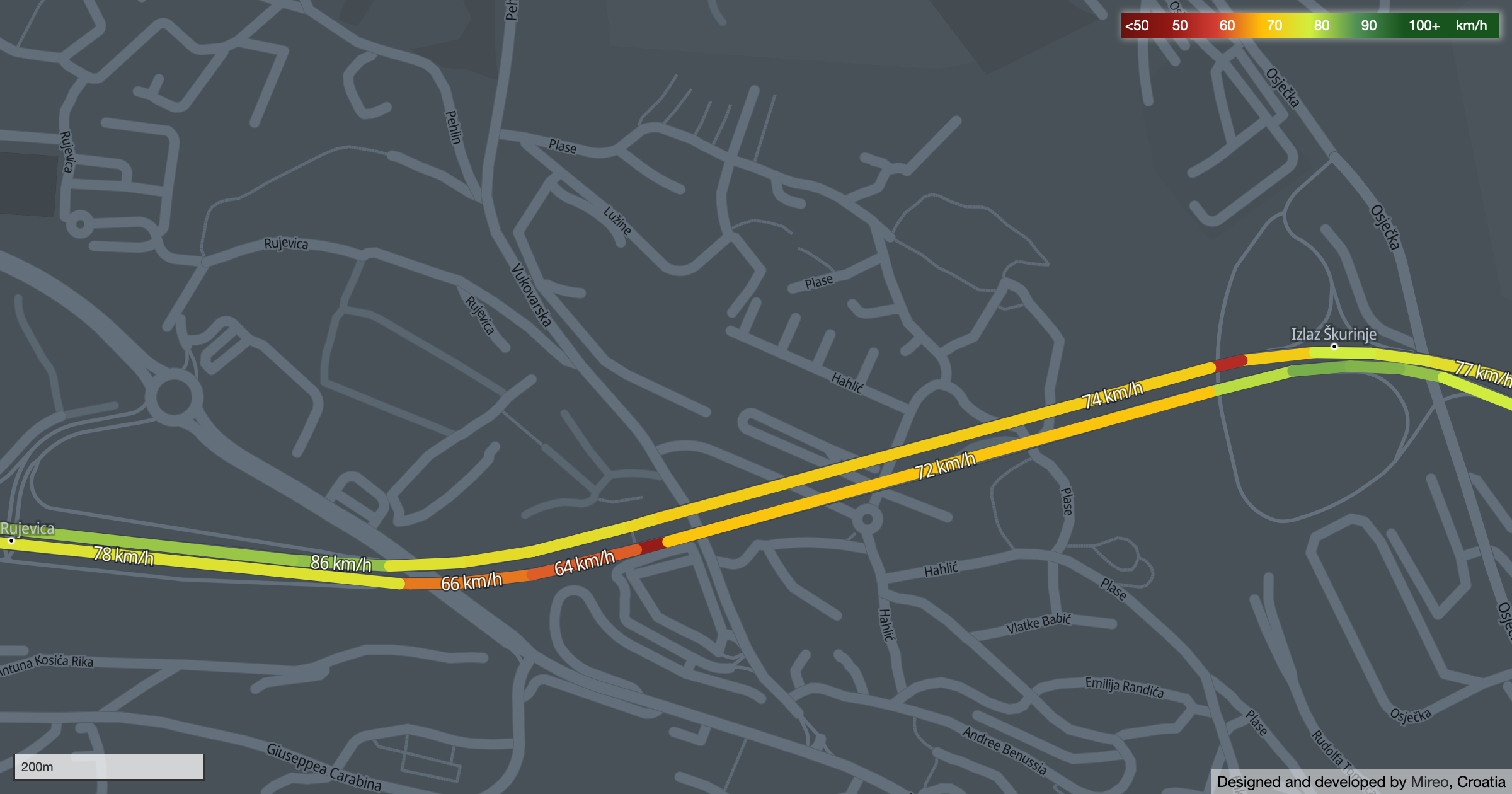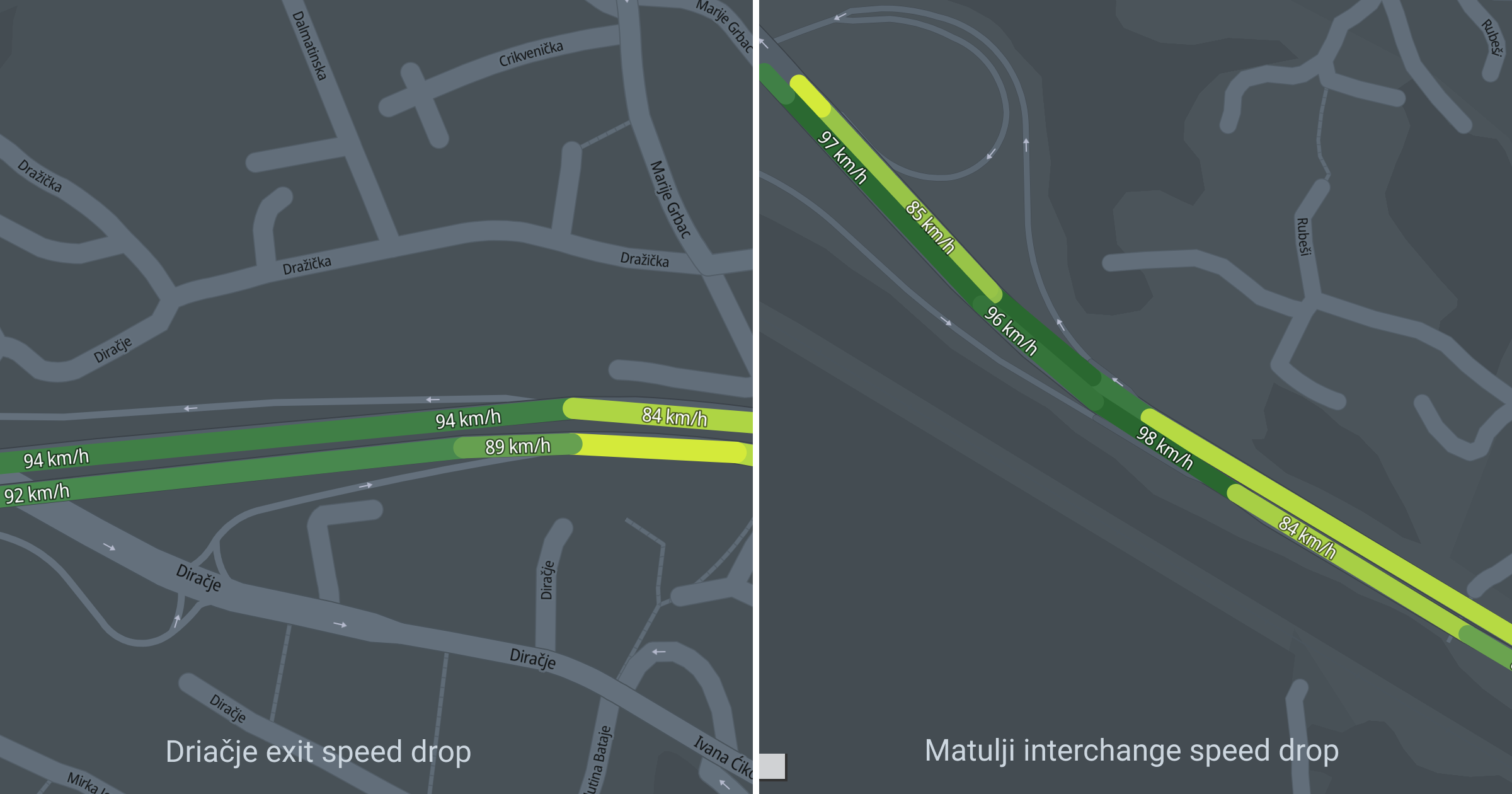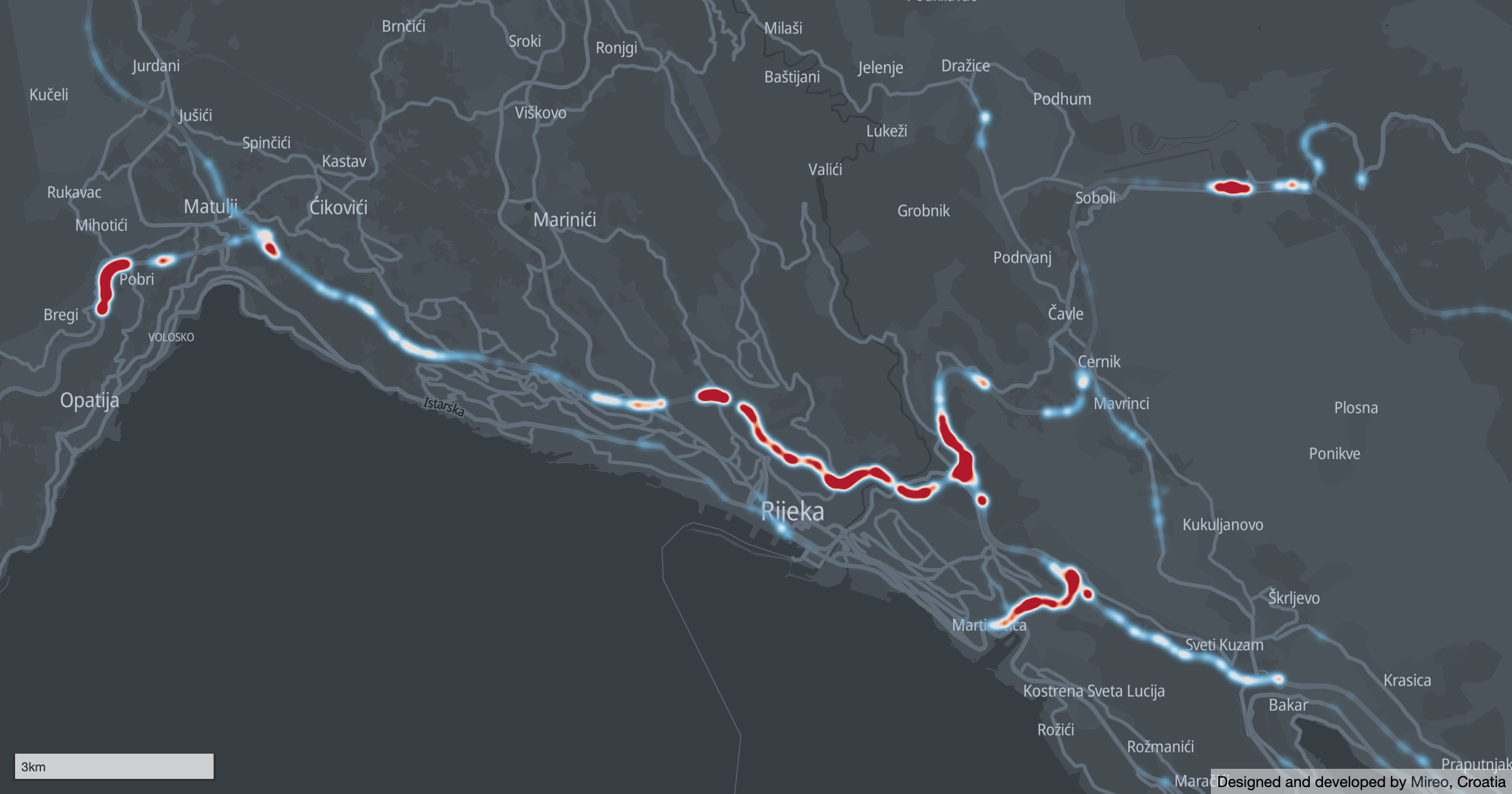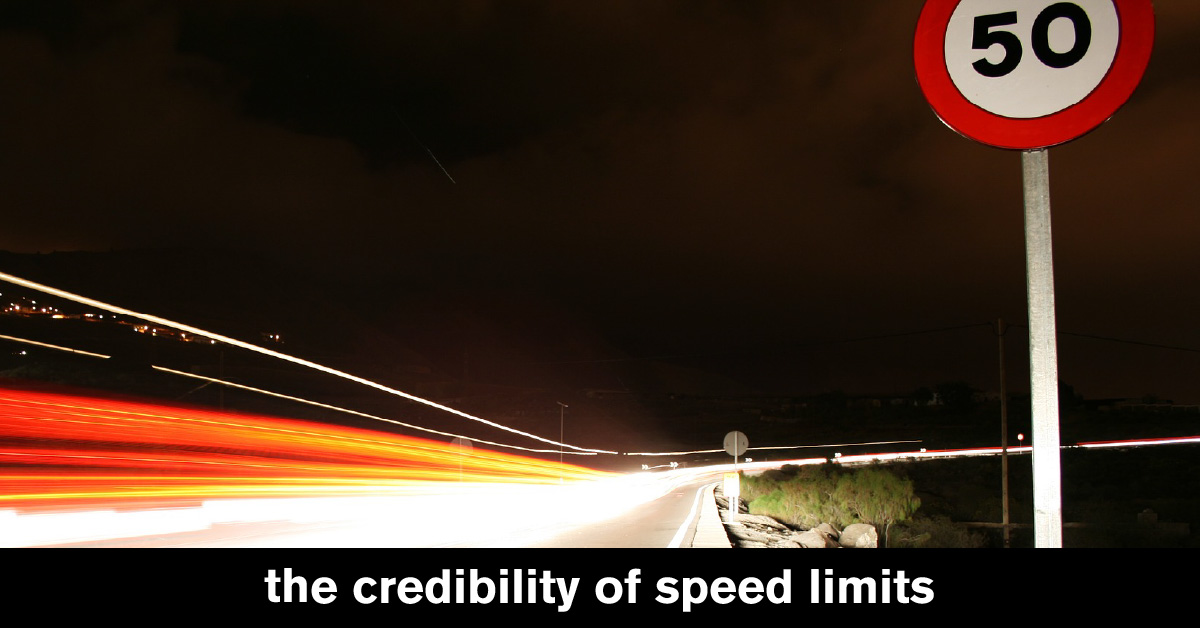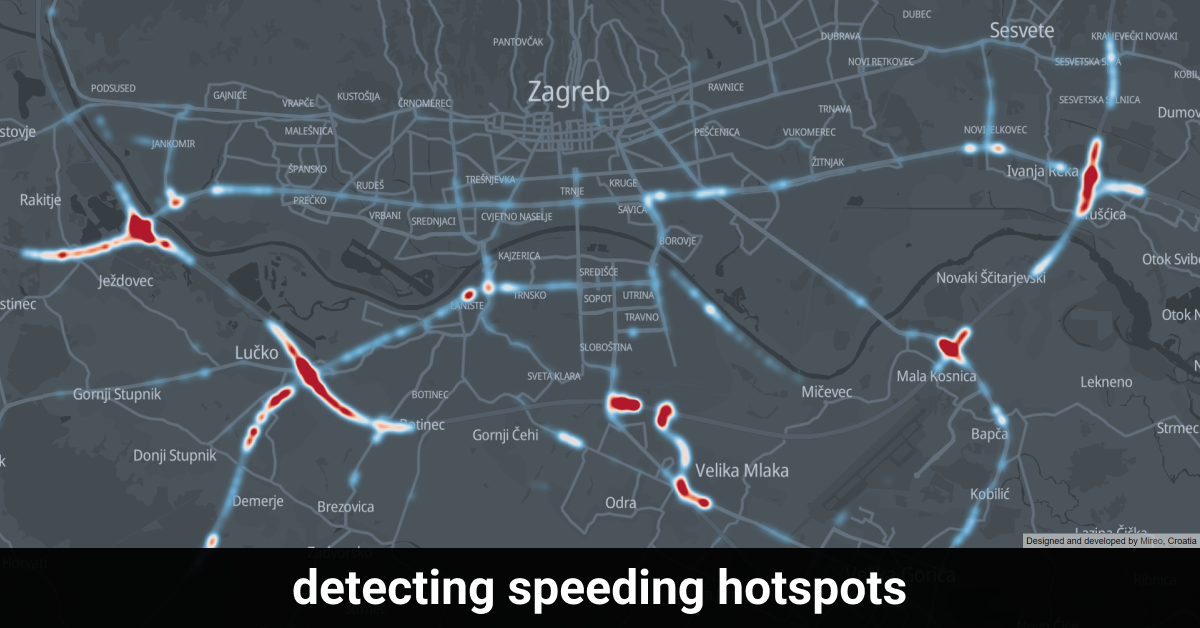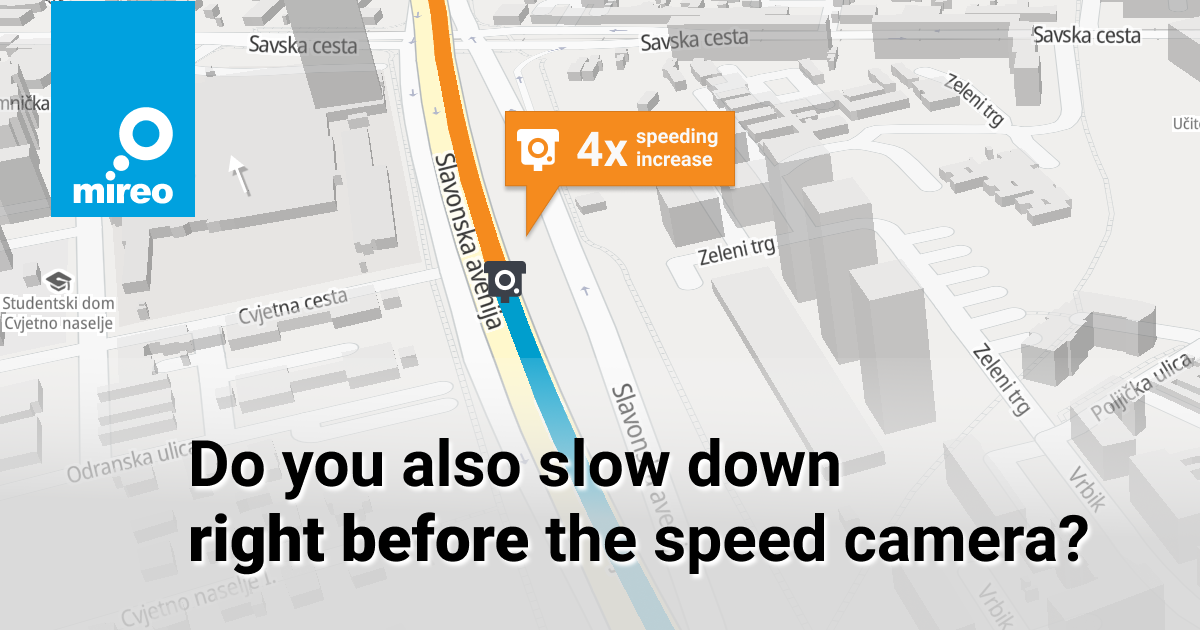Besides the stunning Kvarner bay scenery, the Rijeka bypass is notorious for frequent changes in posted speed limits. To be precise, there are 21 different speed limit signs on the 8 km segment between Orehovica and Zamet exits.
However, the unreasonably low set speed limits are a common subject of debates for years now. Rijeka bypass was reconstructed and opened for public in 2009 as two-lane grade-separated expressway.
But, somehow, although the Croatian speed limit on highways is 130 km/h, the speed limits on Rijeka bypass are mainly set as low as 70 km/h (Orehovica - Diračje) to 90 km/h between Diračje and Matulji interchanges. These limits are most commonly justified by the mountain terrain and impaired road visibility, but the general public's opinion is that the road is perfectly suitable for driving at 80+ km/h speeds.
Is driving 80+ km/h on the Rijeka bypass hearsay or a fact?
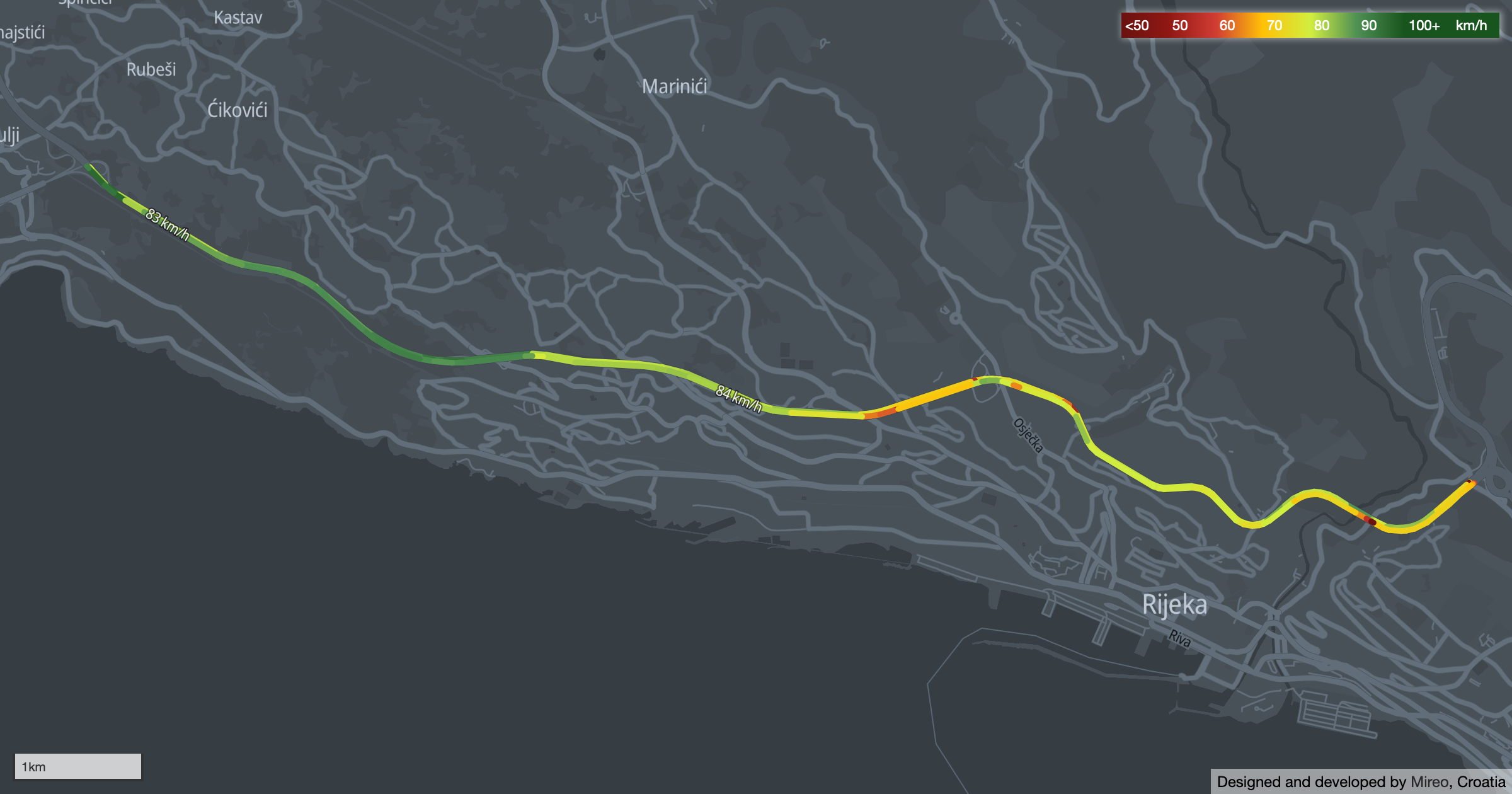
Average travel speed on Rijeka bypass, click on the image to explore the interactive map
For the sake of this argument, we peaked into GPS traces of real-world vehicles from the proprietary GPS tracking solution, and using Mireo SpaceTime Roadway Analytics, we've measured the average speeds across ~100m segments on the Rijeka bypass in both directions.The interactive map of average speed per different Rijeka bypass segments is available here, so feel free to zoom in and explore.
